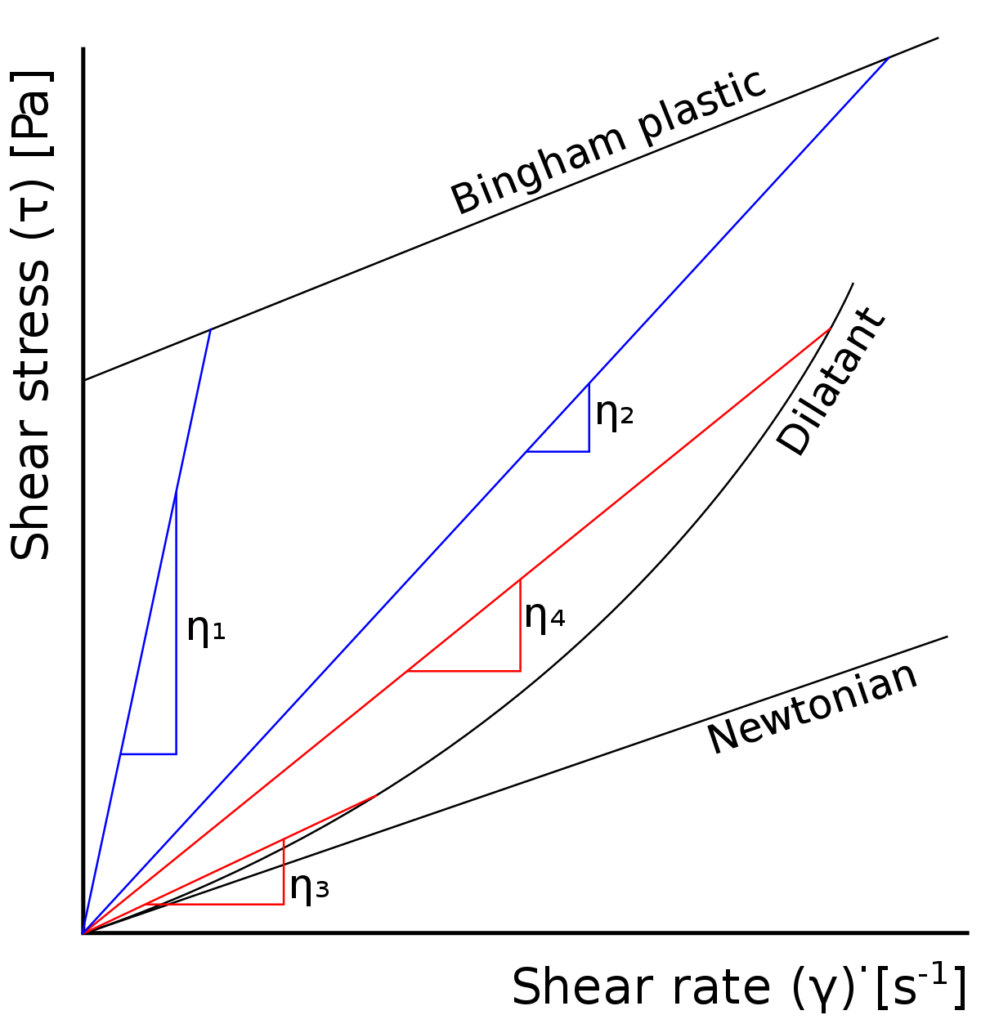What is fluid Viscocity?
Viscosity is the property of the fluid through which it offers resistance to the movement of one layer of fluid over the adjacent layer of the fluid.
Viscosity is the property of a fluid but it is manifested only when the fluid is in motion.
Viscosity property is nothing to do when the fluid is at rest.
When two layers comes in contact the upper layer of fluid which have a higher velocity try to drag the lower layer of the fluid in the direction of the fluid flow. Thus offers a force on the lower layer of fluid. According to Newton’s 3rd law the lower layer offers equal and opposite force in opposite direction of fluid flow.
Thus the velocity of different layer of fluid varies and shear stress comes into picture.
The formula for measuring viscosity is as:
viscosity = shear stress / shear rate
This equation is also known as Newton’s law of Viscocity.
Unit of Viscocity :
SI Unit : Nsec/m^2 or Pascal.sec
CGS Unit : dyne-sec/cm^2
The result is typically expressed in centipoise (cP), which is the equivalent of 1 mPa s (millipascal second).
Shear stress is the force per unit area required to move one layer of fluid in relation to another.
Shear rate is the measure of the change in speed at which intermediate layers move with respect to one another.
Newtonian vs. Non-Newtonian Fluids
Those fluid which obeys Newton’s law of Viscocity is termed as Newtonian Fluid. example : Water, Honey etc.
Those fluid which doestn’t obeys Newton’s law of Viscocity is termed as Non – Newtonian Fluid.example : blood, Milk, Polymer Solution etc.
Non Newtonian Fluid Further catogeroised into two main category i.e.
1)Time Independent
2) Time Dependent
These above mentioned two category further classified into : thixotropic, rheopectic, pseudoplastic, dilatant, and bingham-plastic. Different considerations are required when measuring each of these fluid types.
ImageSource : Wikipedia

